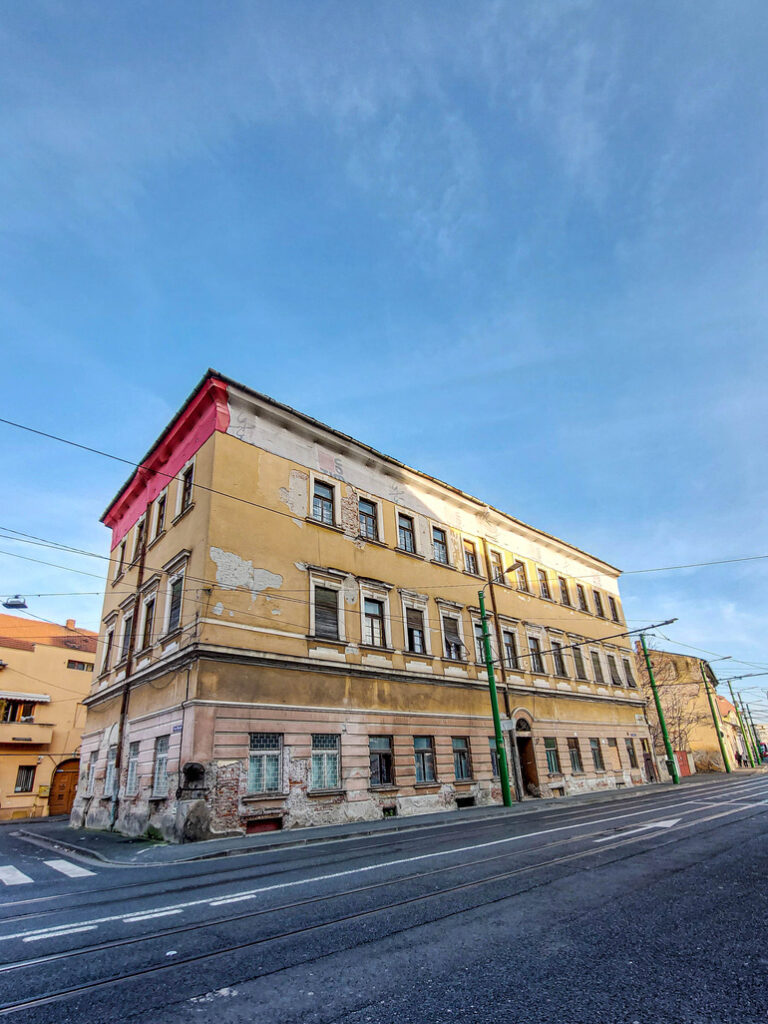
Address: 7 Tribunul Dobra Street, 310101
Dates from: 1815
Architectural style: eclectic
Current role: residential
Can be visited: only the exterior
Other sights in the area: the Hirschl Theatre (1817), the Neolog Synagogue (1834)
The Padlock House was originally built by Josef Winkler, a Viennese merchant. It dates from 1815, but it underwent extensive renovations in 1851, and this is the year inscribed above the entrance.
The most remarkable aspect of the building is a niche in the street-facing corner, barred by a massive iron bar and bolted by a large rusty lock. The niche is empty, and perhaps this is why it draws the curiosity of passers-by.
This niche was designed to house an artefact known as an “Iron Log”. This was a wooden log covered in sheet metal, commonly found in many European cities, usually near the Guild House. It was a tradition for every journeyman (or qualified tradesman) to hammer a nail into the local Iron Log as they passed from city to city, completing their mandatory training. Since each tradesman used a customised nail head pattern, this was a way to trace their journey, as they were gaining working experience across different countries.
Between the 18th and 19th centuries, Arad was home to 32 guilds – associations of merchants and artisans who managed trade practitioners in a certain area. The oldest one was the Furriers’ Guild, registered as far back as 1702. Until their abolition in 1872, the guilds played a crucial role in the city’s development, allowing it to evolve into an important industrial hub later on. At the beginning of the 20th century, there were 25 factories in Arad, among which we can mention the Neuman brothers’ spirits and yeast factory, steam mill and textile factory, the Hendel car factory, the Lengyel furniture factory, Johann Weitzer’s railcar factory, many of them remaining prominent industrial figures in the following decades.
As the story goes, this Iron Log was crafted in 1827 according to the Wien tradition by Moritz Heim, a sculptor from the neighbouring city of Timișoara, and it stayed in its niche on the corner of the building until 1994, when it was stolen. It was later recovered and is now on display in the local Arts Museum.
The lock is quite extraordinary in itself: the legend says that whoever managed to open it was entitled to become owner of the entire building. However, in a playful twist, it seems that the lock entirely lacks the mechanism that would allow one to unbolt it. Other rumours adding to the mystery of the House with a Lock state that it was once used as the local office of the Imperial Austrian Secret Police, or as a prison for revolutionaries. There are other legends stating that there are tunnels underneath the building, leading far out to the fortress or to other neighbourhoods.
No matter how grand its past, these days it serves a modest purpose as a residential building, split into apartments, but the empty niche keeps drawing the attention of local residents and tourists alike.
